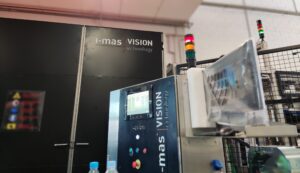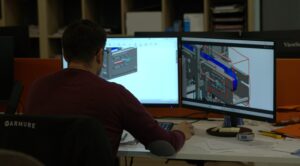The field of product design has undergone significant evolution over the years. It’s not just about creating visually appealing products, but also focusing on comfort, usability, and efficiency.
Ergonomic design and innovation have become crucial to stand out in the market and improve users’ quality of life.
What do we understand by ergonomic design?”
Before delving deeper, it is necessary to first understand the concept of ergonomics.
Ergonomics is a discipline that focuses on studying the relationship between people and their environment. Its main objective is to optimize the interaction between people and products, improving efficiency, usability, and minimizing the risk of injuries. It is used to determine the design or adapt the workplace to the workers.
In product design, ergonomics involves considering factors such as shape, size, and ease of use. An ergonomic product adapts to the user, rather than requiring the user to adapt to it.
The Importance of Ergonomics in Product Design”
- Enhancing User Experience: Ergonomic products provide a superior user experience. Comfort and ease of use are fundamental to meeting the needs and expectations of customers.
- Increases efficiency: Ergonomically well-designed products enable users to perform tasks more efficiently and without undue strain.
- Reduces the risk of injuries: Products that do not consider ergonomics can contribute to injuries and long-term health problems. An ergonomic design helps prevent injuries related to product use.
- Expands the audience: Ergonomic products are more inclusive as they are easier to use for people of different ages and abilities.
The influence of i-mas on Innovation and Ergonomic Design
At i-mas, we share a passion for developing products and industrial processes in a functional, effective and sustainable way through innovation.
Ergonomic design is reflected in one of our projects: Didobaby. Our product department has designed a tool that facilitates babies to independently start consuming food such as fruit pouches, liquid yogurt, and juice boxes.
In this project, we can clearly highlight the product’s ergonomics. Ergonomic design is one of its main features. Its handles have been meticulously designed to fit precisely in baby’s hands, facilitating sucking and ensuring a comfortable and easy feeding experience. On the other hand, the rounded shapes in the areas of contact with the child’s face ensure safety and well-being.
Also, Didobaby is an example of innovation by offering unmatched versatility. It can be used for juice pouches and juice boxes with a straw by flipping it over, making it a unique product in its category. Innovation and ergonomic design combine to create a product that both enhances the feeding experience for babies and makes life easier for parents.
Ultimately, innovation involves the introduction of new ideas and creative solutions, while ergonomic design ensures that these ideas are translated into products that meet the needs of users effectively and comfortably. In the product design and development sector, we can see many examples such as Didobaby, which demonstrate how these two elements can be combined to create solutions that significantly improve people’s lives.
Find out more about Didobaby and other projects here.
Do you have any project in mind? We want to meet you!



